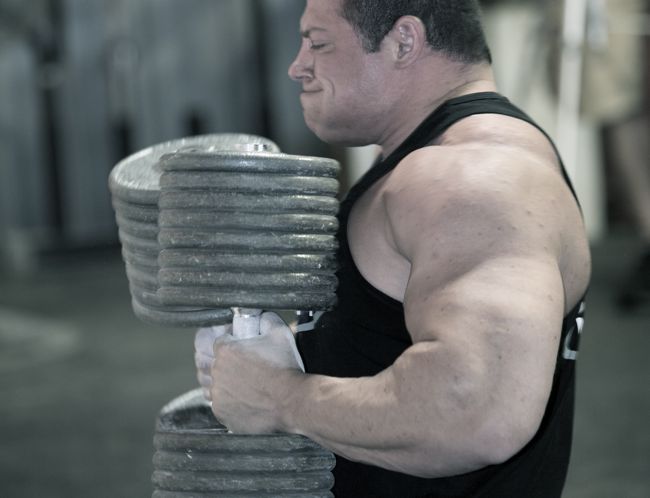
When it comes to having power, moving fast and being explosive are musts for all trainees.
Whether you’re training for a sport or simply hitting the iron to look ripped and shredded, training with explosiveness is the key! I don’t care if you’re just trying to lose fat to look good on the beach. You need to make sure you train fast with explosive movements.
Enter power circuits.These babies are good for a bunch of different reasons.
Here’s a few:
- Strength and power: You train with big, complex and explosive lifts which carry over to a lot of different things in both life and sport.
- Fat burning: The short “all out” work sets will create a nice metabolic effect that will help to lean you up.
- Athleticism: You use full body explosive movements which will help you increase overall mobility and agility. This is also good for athletic carryover.
I wanted to figure out a way to use some heavier Olympic style lifts while combining two or more body weight explosive movements. The goal isn’t to be totally fatigued from the circuit but rather be able to go “all out” for the entire circuit. So these power circuits are designed to be short, around 30–50 seconds max. When you’re training for max power, it isn't good to go into fatigue. When you get fatigued, you lose power and therefore can’t train at max speed. This will result in you actually building less power over time, which isn't good if you’re trying to build explosive power for sports. It’s still OK if you’re trying to melt fat though.
Now, how do you build your own power circuits? You’ll choose from three movements.
First movement: The first movement is a full body, weighted, explosive movement. This could be many of your different Olympic lifts such as a power clean, snatch, clean and press, clean and jerk, or high pull. It could also be a heavily weighted sandbag clean, clean and press, or shouldering. You could also choose from different kettlebell combinations such as the clean and press, clean and jerk, or the snatch. Each of those are all high power movements you can do with heavier weights.
Second and third movements: These can be either lightly weighted power movements or full body explosive/strength movements. A few examples of lightly weighted explosive movements are:
- Medicine ball slams
- Kettlebell swings
- Sledgehammer swings
- Band squat rows
- Prowlersprints
- Sled drags/sprints
- Battling rope slams
Some examples of your full body explosive / strength movements would be:
- Burpees
- Box jumps
- Explosive/kipping pull-ups
- Plyo push-ups
- Ropes climbs/explosive rows
- Short sprints
- Short agility drills
After you've picked out a few movements, it’s time to put them together! I started off with some power cleans and jerks and then went straight into some burpees. I ended with some pull-ups. The key is to go heavy with your first movement and choose two complimentary movements to follow. So it wouldn’t be wise to go with three pressing movements. You want to work your entire body as best as you can.
The reps scheme I used was four with the clean and jerk, six with the burpees, and eight with the pull-ups. These are all relatively low reps so I could stay in my power zone. You can mess around with even lower reps as well.
Here’s a few more examples of some power circuits: 
1A) Heavy sandbag shouldering X 4 reps
1B) Plyo push-ups X 6
1C) 20-yard Prowler sprints X 1
1A) Power snatch X 4
1B) Medicine ball slams X 6
1C) Power band rows X 8
If you were to use other movements like above, you would want to keep them in the low reps range. For your sprints and running movements, you would want to only go a distance that allows for about 6–7 seconds max. I hope you understand what we’re shooting for—max power and max effort every round!
Take a 3–4 minute break between each power circuit and then repeat the circuit 8–10 total times. Give this a shot if you’re an athlete looking to gain some serious power and conditioning. Also, if you’re someone looking to burn some fat, this would also serve as a powerful method in torching some unwanted tissue off your body! Live aggressive and get strong!









1 Comment